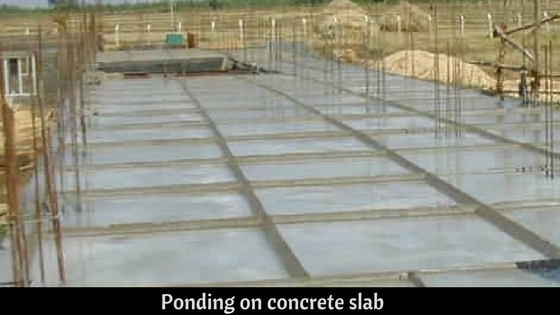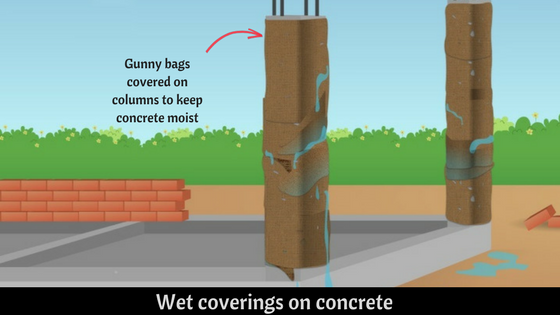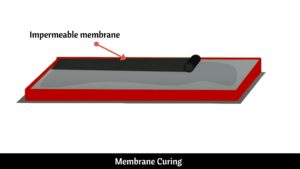Curing of concrete
Purpose of Curing of Concrete:-
The reaction between cement and water is called hydration.
It is an exothermic reaction (the reaction which releases heat).
After adding water to the concrete mix, hydration starts,
which makes the concrete to dry out quickly due to an exothermic reaction
which releases heat. To complete the hydration process, concrete is kept
moist to attain the maximum strength of concrete as soon as possible.
Procedure for curing of concrete :
Draining water on the concrete surface cures the concrete.
Water cooler than 50C is not suitable for curing concrete.
As the hydration reaction in concrete expels heat and keep concrete warm,
Using cold water less than 50C on concrete may lead to cracking and failing.
Alternate drying and wetting on the concrete surface causes volumetric
changes in concrete and ultimately leads to cracking.
Minimum curing time for cement concrete:-
The early strength of concrete is most important, and it is responsible for
the ultimate strength of concrete. We should do proper curing
by considering the environmental conditions, type of structural members, atmospheric temperature.
Maintaining the proper temperature also plays a vital role in concrete as mentioned,
it should not be colder than 50C. Concrete is kept moist for at least 28 days.
Nowadays, due to lack of time, the curing can be achieved by following modern
techniques in 14-20 Days. Nevertheless, it is always advisable to keep
concrete moist for at least 14 days.
As per IS 456 – 2000, concrete should not be cured less than 7 days for ordinary
Portland Cement, & it must be at least 10 days for concrete with mineral
admixtures or blended cement.
In case of hot weather and arid temperature conditions, the curing should not
be less than 10 Days for OPC and 14 days for concrete with blended cement & mineral admixtures.
The curing time or period of concrete is dependent on the following factors:
- Specified Strength of Concrete
- Grades of concrete
- Atmospheric temperature: Due to the chemical reaction between cement and water in concrete
- releases heat which requires water to complete hydration.
- In summer 50% of water is evaporated. So, More amount of water needed during sunny days.
- Size and Shape of the Concrete member
Concrete Curing Methods:-
Ponding:
This method adopted for floor slabs. The concrete surface divided into small ponds, and these ponds are filled with water continuously for 14 days.

Wet coverings:
This type of method performed for columns, footings, and the bottom surface of slabs, where ponding is not possible. Impermeable coverings like gunny bags or hessian are required to cover the concrete; these membranes sprayed with water to keep the concrete moist.

Membrane Curing of Concrete:
Ponding is not suitable at the places where the atmospheric temperatures are high. Water gets evaporated due to the excessive heat. Membrane curing is adopted to prevent the loss of water content due to atmospheric temperature from concrete.
Membrane curing helps seal off by forming an impermeable layer on the concrete surface, which eventually resists evaporation. This procedure is generally performed by brushing or spraying the curing compound on the concrete surface.









0 Comments